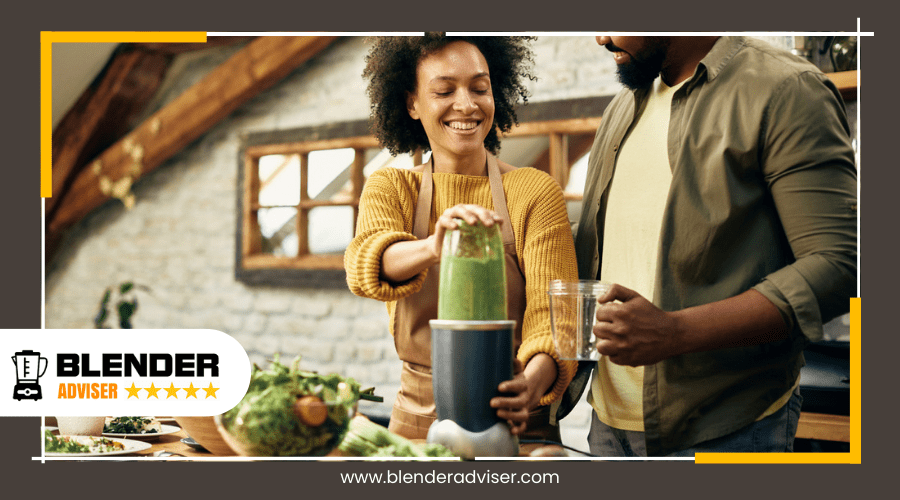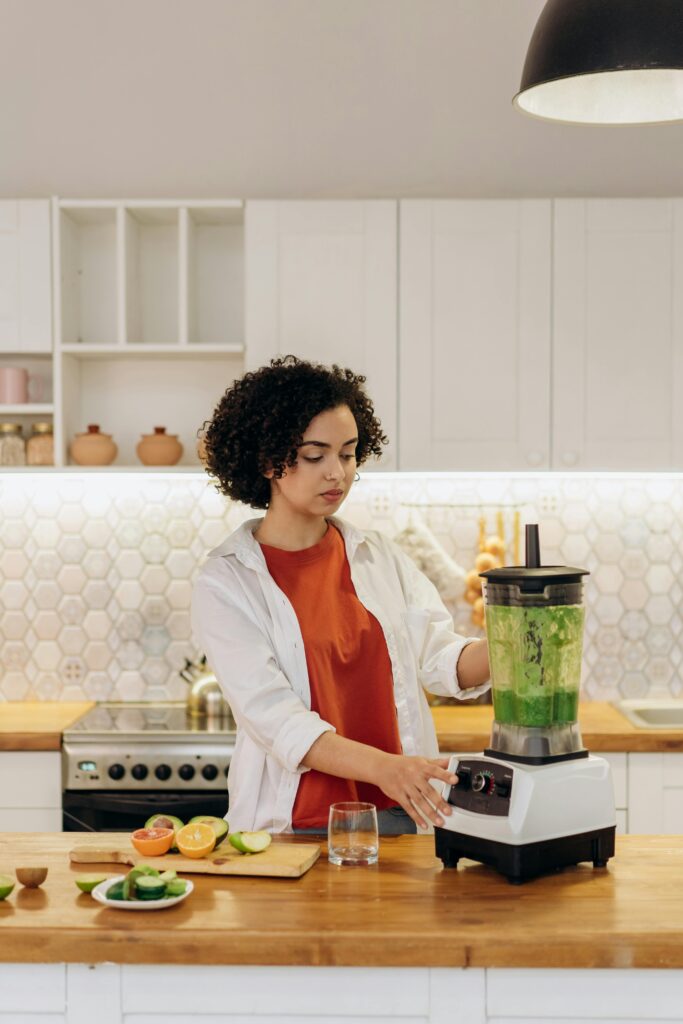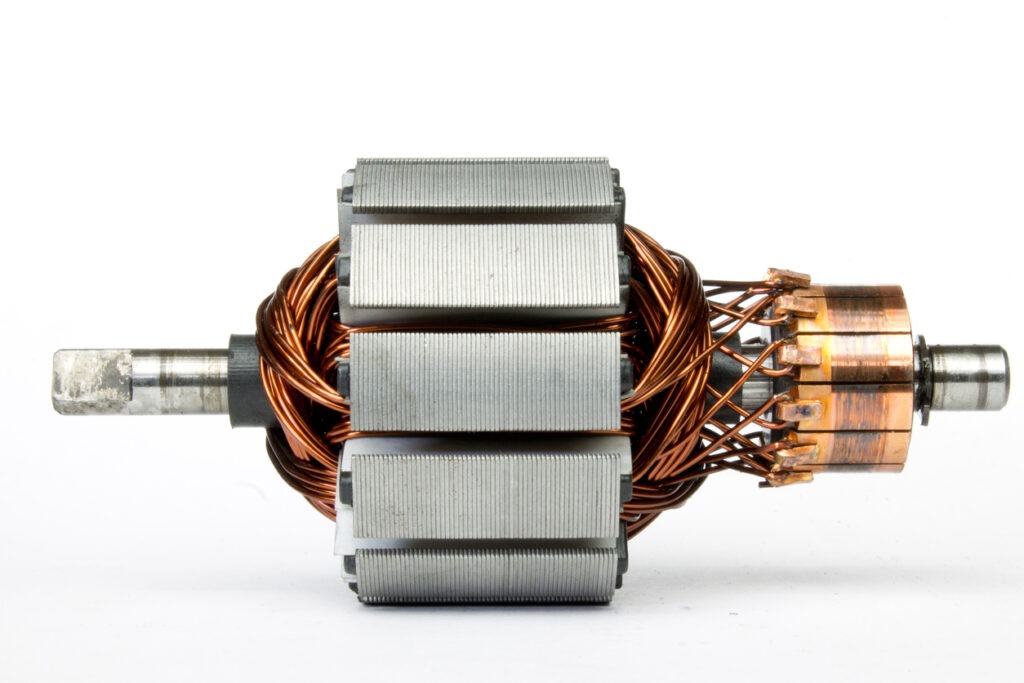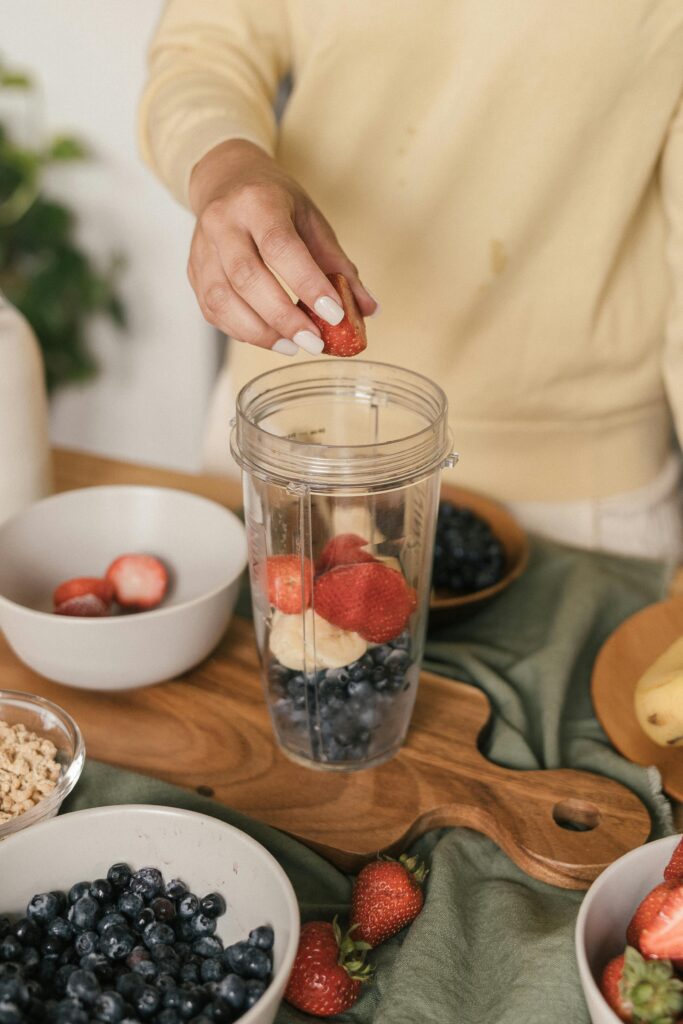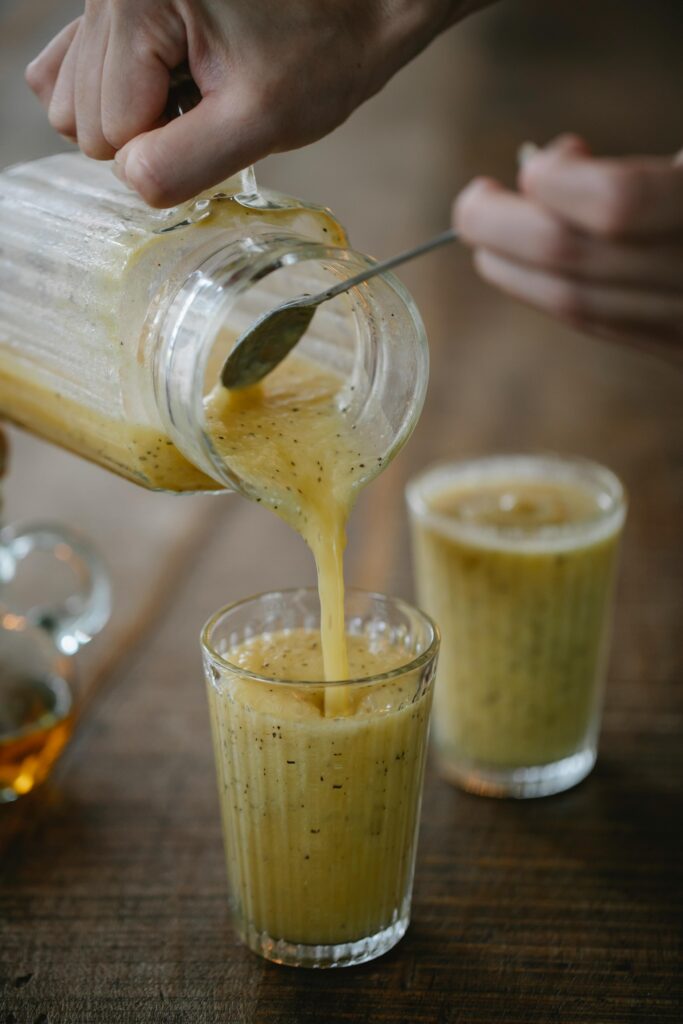Interestingly, you might find yourself at a crossroads when deciding between a smoothie maker and a blender, much like choosing between a Swiss Army knife and a specialized tool. You’re not alone in pondering their differences, as both are designed to transform ingredients into liquid form, yet their paths diverge significantly in functionality and end results.
While a blender serves as a jack-of-all-trades in the kitchen, capable of handling a wide range of tasks, a smoothie maker focuses on perfecting one thing: crafting the smoothest and most delightful smoothies. This distinction raises a question about what you value more: versatility or specialization?
Let’s explore further to uncover which appliance truly meets your culinary needs.
Defining the Basics
Understanding the fundamental differences between a smoothie maker and a blender is crucial when choosing the right appliance for your culinary needs. Smoothie makers are the go-to for those who love a good smoothie with a consistent texture. They’re specifically designed to handle fruits, vegetables, yogurt, and liquids, ensuring that your smoothie comes out just right every time. Unlike their more versatile cousins, smoothie makers often come with preset blending programs. These are optimized to deliver the smooth consistency you crave without the guesswork.
Moreover, smoothie makers are typically more compact than blenders. This design choice is intentional, catering to single-serving creations or smaller batches that don’t require the capacity of a larger blender. It’s this focus on specialization that sets smoothie makers apart. They’re engineered for one primary function: to produce perfectly blended smoothies. If your kitchen adventures are mostly about crafting that ideal smoothie, then a smoothie maker might just be what you’re looking for. It’s a choice that prioritizes specialized functionality over broad versatility, perfect for smoothie enthusiasts.
Key Functional Differences
While the previous section outlined the basic distinctions, let’s now focus on the key functional differences that set smoothie makers and blenders apart in the kitchen. You’ll find that each appliance has its specialty, particularly when it comes to crafting the perfect smoothie.
| Feature | Smoothie Maker | Blender |
|---|---|---|
| Design Purpose | Specifically for smoothies | Versatile kitchen tool |
| Preset Programs | Optimized for smoothies | Varied settings for multiple recipes |
| Best For | Smooth, lump-free beverages | Soups, sauces, and crushing ice |
Smoothie makers are your go-to for a quick, effortless smoothie experience. They’re designed with your morning routine in mind, focusing on blending fruits, vegetables, yogurt, and liquids into a perfectly smooth beverage without the fuss. On the other hand, blenders offer you a broader canvas, not just limited to smoothies. They can crush ice for your cocktails, puree vegetables for soups, and even help in making sauces. However, achieving that perfect smoothie consistency might require a bit more tweaking with a blender’s settings. In essence, if smoothies are your main goal, a smoothie maker simplifies the process, while blenders offer more versatility for culinary creativity beyond just smoothies.
Motor Power Comparison
One significant distinction between smoothie makers and blenders lies in their motor power, which directly impacts their blending capabilities and the variety of tasks they can handle. Smoothie makers typically have lower motor power, ranging from 200 to 500 watts. This level of power is designed to efficiently blend fruits, vegetables, and liquids, making it ideal for smoothies and shakes. On the other hand, blenders boast higher motor power, starting from 500 watts and reaching up to 1500 watts or more for heavy-duty tasks. This increased power allows blenders to handle tougher ingredients like ice, nuts, and seeds, making them more versatile for a wide range of recipes.
The difference in motor power isn’t just about the ability to blend harder ingredients. It also influences the blending speed and consistency of the final product. With higher motor power, blenders can offer more speed and a smoother consistency, making them suitable for more diverse blending needs beyond just smoothies. This makes a blender a more versatile kitchen tool, capable of supporting a broader spectrum of culinary tasks.
Blade Design and Performance
Smoothie makers often feature blades specifically designed to create smooth, lump-free drinks, contrasting with the more versatile but less specialized blades found in blenders. These specially engineered blades in smoothie makers are optimized for blending fruits and vegetables, ensuring that every sip of your drink is as smooth as possible. They’re particularly adept at crushing ice and blending frozen fruits, which means you can enjoy a well-mixed, chilled beverage without the hassle of chunks or uneven textures.
On the other hand, blender blades, while robust and capable of handling a wide variety of ingredients and tasks, may not always achieve the same level of smoothness. Their design, which is built for versatility, can sometimes leave small chunks in your smoothies. This is where the blade design of smoothie makers stands out. They’re focused on achieving a consistent, smooth texture, playing a crucial role in producing fully liquefied fruits and seeds for a smoother drink.
Container Shape and Size
Have you ever considered how the container shape and size can significantly influence your blending experience? The choice between a smoothie blender and a traditional blender often boils down to these aspects. Smoothie makers are typically equipped with smaller, more compact containers. These are perfect if you’re aiming to whip up single servings or small batches. Their design isn’t just about saving space; it’s also about convenience. Many smoothie maker containers are crafted for on-the-go use, featuring detachable cups or travel lids that let you enjoy your creations anywhere.
On the other hand, blender containers boast a larger capacity. This makes them incredibly versatile, ready to accommodate a variety of ingredients for different recipes beyond just smoothies. Whether you’re making soups, sauces, or batches of frozen drinks, a blender’s container is designed to handle it all.
But when it’s all about crafting that perfect smoothie with ease, the specific container shape and size of a smoothie maker are optimized to deliver well-blended beverages with consistent texture every time. It’s about choosing the right tool for your needs, prioritizing simplicity and efficiency in your kitchen routines.
Ease of Use and Cleaning
When considering the convenience of your morning routine, ease of use and cleaning become crucial factors in choosing between a smoothie maker and a traditional blender.
Smoothie makers shine in the realm of convenience, allowing you to blend directly in the drinking container. This means you’re spared the hassle of transferring your smoothie to a different cup and reduces the need for extra washing up. Imagine just blending your ingredients and heading out the door with the same container. It’s the epitome of convenience for your busy mornings.
On the other hand, traditional blenders mightn’t be as forgiving on your tight schedule. Often, they require more cleaning and handling of multiple parts, making them less user-friendly in this aspect. While the versatility of a traditional blender is undeniable, the ease of cleaning is something to consider.
Some smoothie makers, however, may have more complex parts to clean, despite their direct blend-and-go advantage. It’s essential to weigh the convenience of the blending and cleaning processes against each other to choose the most user-friendly option for you, ensuring your mornings are as smooth as your smoothie.
Versatility in Kitchen Use
Blenders bring to the table a broad spectrum of functionalities, stretching from ice-crushing to soup-making, making them a versatile tool in any kitchen. If you’re seeking a kitchen appliance that offers a wide range of options for your culinary adventures, a blender might be your go-to device. Unlike smoothie makers, which are tailored for creating smooth, lump-free beverages, blenders can tackle a variety of tasks.
- Crushing Ice: Perfect for those who love chilled drinks and smoothies.
- Pureeing Vegetables: Ideal for making soups or sauces with a smooth texture.
- Making Soups: Some blenders are powerful enough to heat and blend soups simultaneously.
- Versatile Textures: Can handle recipes requiring different textures and consistencies.
While smoothie makers are streamlined for smoothie-making, providing a hassle-free experience, they don’t match the versatility of blenders. Blenders are your ally if you’re after a range of options, from preparing a chunky salsa to a creamy almond milk. For those who enjoy experimenting in the kitchen or need a multi-use appliance, a blender offers functionality that a smoothie maker simply can’t match.
Price Points and Value
When you’re considering whether to buy a blender or a smoothie maker, the price is a crucial factor. Blenders offer a wide price range, giving you options from budget-friendly to high-end. Smoothie makers start at lower price points but can also reach into the thousands for top-tier models.
It’s worth considering not just the initial cost, but also which appliance gives you the best value for your needs and budget.
Cost Comparison
Evaluating the price points of blenders and smoothie makers reveals a broad spectrum, ensuring there’s an option for every budget. While the difference between a Blender and smoothie maker might seem subtle, their costs can vary significantly based on features, quality, and brand.
- Blenders can be as affordable as $10.00 but may exceed $100.00 for models with extra attachments and features.
- Smoothie makers have a starting price of $29.99, making them accessible for smoothie lovers.
- High-end smoothie makers can skyrocket to over $1,000.00, appealing to those with a preference for specific brands or advanced functionalities.
- The wide price range means comparing the features, capacity, and quality is crucial to finding the best value for your money.
Investment Worthiness
You’ll find that assessing the investment worthiness of a blender or smoothie maker hinges on understanding the value each brings to your kitchen, relative to their price points. The difference in price ranges reflects the variety in features and brand quality.
| Appliance Type | Price Range | Key Features |
|---|---|---|
| Blender | $10 – $100+ | Wide range, versatile |
| Smoothie Maker | $29.99 – $1,000+ | Specialized, advanced features |
| Comparison | Budget to luxury | Consider attachments and needs |
Your choice depends on your budget and specific blending needs. Whether you opt for a budget-friendly blender or a high-end smoothie maker, consider the difference in value each offers. It’s not just about the price but the attachments and features that meet your kitchen needs.
Smoothie Quality and Texture
When you’re comparing smoothie makers and blenders, you’ll find that the key differences in the consistency of your smoothies boil down to the blending power and consistency factors. Smoothie makers are designed to produce a smoother texture by thoroughly blending all ingredients, including tough seeds.
In contrast, blenders mightn’t achieve the same level of smoothness, which can affect the quality and enjoyment of your drink.
Consistency Factors
Considering the consistency factors, smoothie makers generally outperform blenders in creating a silkier texture, which significantly elevates the quality of your drink. This key distinction lies in how each appliance was designed, with smoothie makers specifically engineered to produce the smoothest beverages possible.
- Smoothie makers fully liquefy fruits and seeds, ensuring no bits are left behind.
- Blenders may leave small chunks, affecting the smoothness of your drink.
- The consistent, lump-free texture from a smoothie maker enhances the drinking experience.
- Achieving a velvety texture appeals to those desiring a high-quality beverage.
The difference in texture not only affects the feel of the drink but also its overall appeal, making the choice between these appliances crucial for smoothie enthusiasts.
Blending Power Differences
Building on the importance of texture, let’s explore how the blending power of smoothie makers and blenders affects the quality and texture of your smoothies.
Smoothie makers excel at crushing ice, ensuring your drinks aren’t only cold but also have a smoother texture. Unlike blenders, which may leave behind small fruit chunks, smoothie makers fully liquefy fruits and seeds, guaranteeing a consistent and well-blended drink texture. This focus on smooth consistency significantly enhances the overall quality of the beverage.
While you can use blenders for making smoothies, they mightn’t achieve the same level of smoothness that dedicated smoothie makers provide. So, if you’re aiming for perfectly smooth drinks every time, a smoothie maker is your go-to appliance.
Making the Right Choice
Evaluating your primary needs is crucial in deciding whether a smoothie maker or a blender fits best in your kitchen. If you’re pondering this choice, consider the following points to guide your decision:
- Consider your primary use case: If smoothies and shakes are your go-to, a smoothie maker, often quite compact, may better suit your needs.
- Evaluate your kitchen space: Limited counter space? A compact smoothie maker could be the better choice, offering convenience without taking up much room.
- Factor in cleaning and maintenance: For those who dread cleanup, smoothie makers designed for single servings might offer an easier solution compared to the often larger blenders.
- Think about versatility: If you’re looking for a device that can handle more than just smoothies, a blender offers greater versatility for a wide range of recipes.
Conclusion
In summary, when you’re deciding between a smoothie maker and a blender, it’s all about what you need. A blender offers versatility, handling everything from ice crushing to soup making.
On the other hand, a smoothie maker excels in whipping up perfect smoothies with ease, thanks to its specialized features. Consider your kitchen habits, the quality and texture you prefer in your smoothies, and your budget.
Making the right choice will ensure you get the most out of your purchase.

